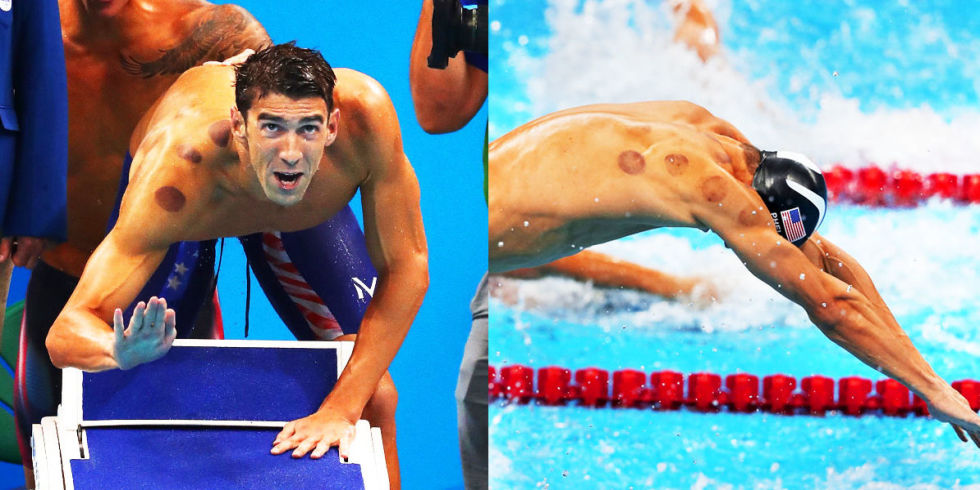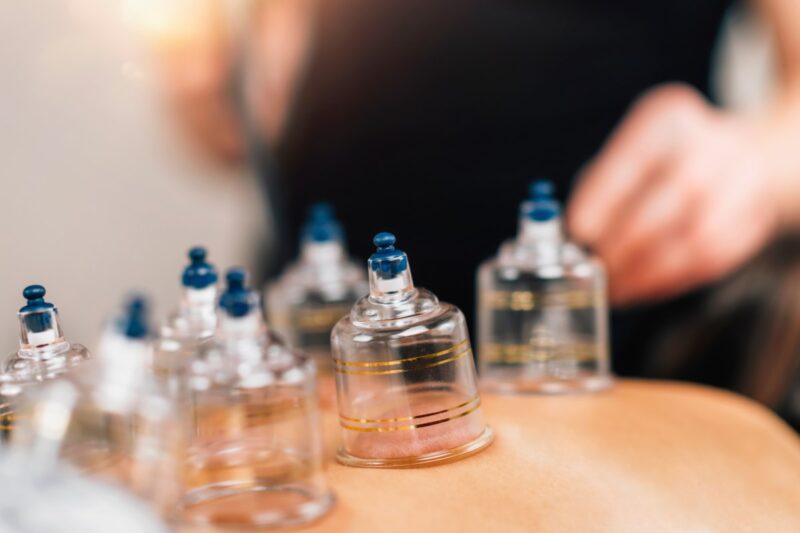
You may have noticed swimmers at the Rio Olympics with scary large red circles on their skin. Even Michael Phelps, one of the greatest Olympians of all time, has them. The red circles are caused by cupping therapy.
It is considered a pseudo-scientific treat that dates back two millennia. Cupping is documented in Greek and Egyptian medical practices to alleviate physical ailments and depression and anxiety. Ebers Papyrus, one of the oldest medical textbooks in the world describes how ancient Egyptians used cupping therapy as early as 1,500 B.C.
How Cupping Therapy Works
Cupping therapy consists of a short and simple process. It involves placing small glass cups on the skin with either a flame or an air pump to create suction. This process pulls the skin away from the underlying muscle. The suction lasts a few minutes and causes capillaries to stagnate. The stagnation of blood creates the infamous red bruises that everyone at the Olympics is talking about.
Types of Cupping Therapy
There is more than one way to do things when it comes to cupping therapy. We have compiled a list of all of these.
- Dry Cupping: Only uses suctioning
- Wet/Bleeding Cupping: Suctions the skin and uses controlled medicinal bleeding
- Running Cupping: Move suction cups around the body after putting oil on the area that will be massaged
- Flash Cupping: Quickly suctioning and releasing cups on part of the body
Each of these techniques works differently. Which one each person uses comes down to preference and what they are trying to achieve.
Reasons for Cupping Therapy
Cupping advocates have multiple reasons for partaking in it. Athletes see the benefits that cupping therapy has. We discuss some of them below.
Releases Blockages:
The flow of energy and blood circulation throughout the body increases after cupping. This helps athletes recover from injuries quicker. Blockages can slow you down when swimming because energy will not be supplied to your body. So by creating a path free of obstacles for your blood to flow through, performance can be improved.
Bring Toxins in the Body to the Surface:
When cups are applied to the body, medical professionals claim toxins come to the surface. Uric acid is one of these, which comes from the digestion of certain foods. A buildup can cause higher levels of acidity in your blood and urine. In turn, pain is reduced. More specific conditions like back problems and body ache also improve.
Evidence to Support Cupping Therapy
Many athletes and trainers swear by the effectiveness of cupping therapy. There is no scientific evidence to support this claim. Doctors suggest that any benefits experienced from cupping therapy are simply a placebo effect.
A study of 40 patients with knee arthritis was done. It found that the group who used cupping therapy experienced less pain after four months compared to those who were not treated. Although the group that was treated may have experienced exaggerated benefits and improvement. This could come from alternate sources that were not mentioned.
Impact of Cupping Therapy
Cupping’s most noticeable effect is bruising. The colouring can range from light red to dark purple. These can last anywhere from a few hours to three weeks. Dark colouring indicates there is a high level of toxins and stagnation in the section of the body. When this happens, bruises can last for up to 21 days (or three weeks). If there are not any toxins or the bruise is light in colour, they can fade away within a few hours.


